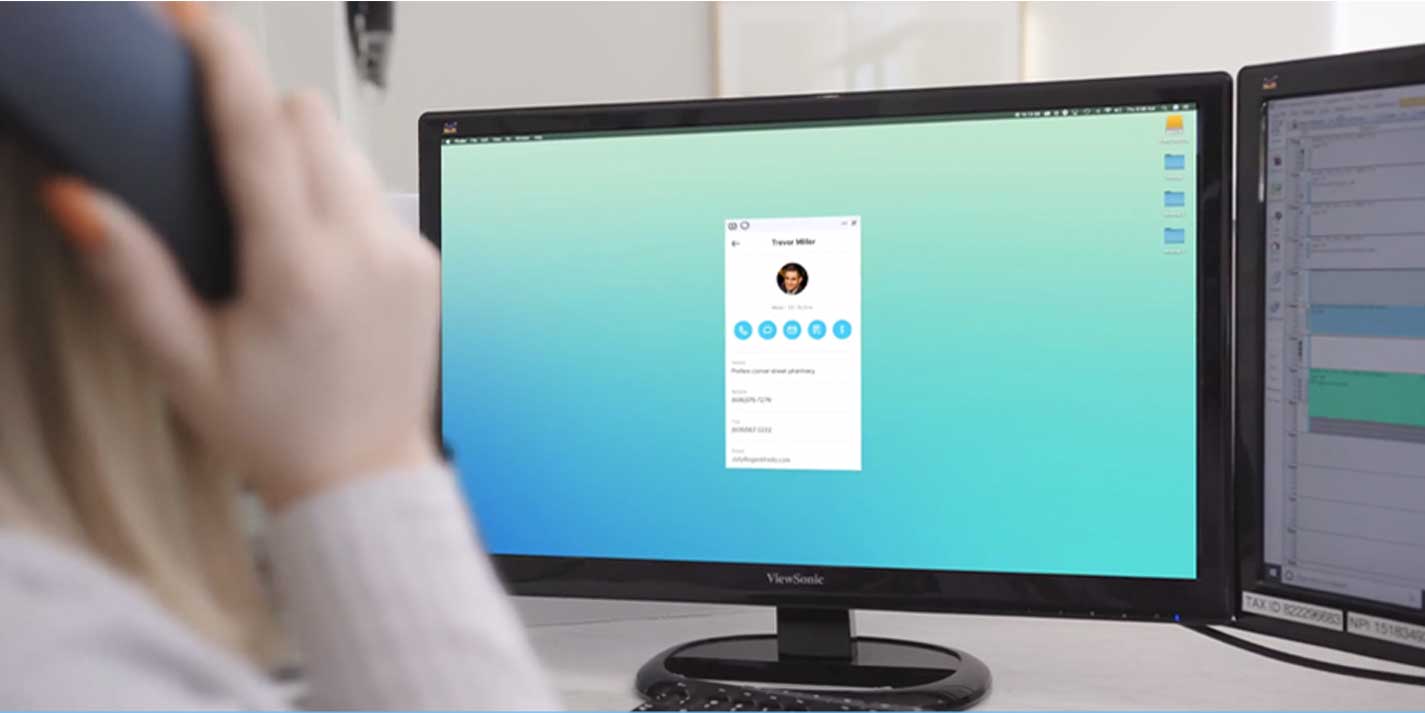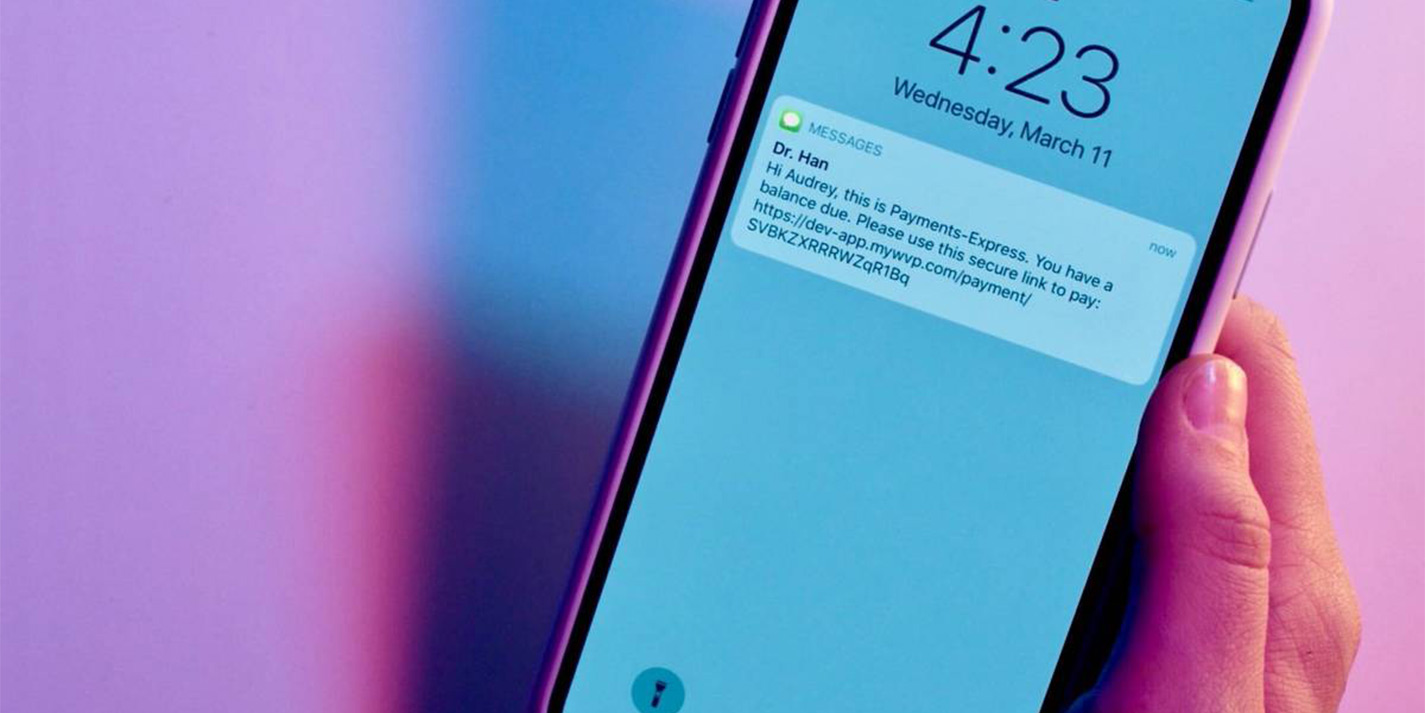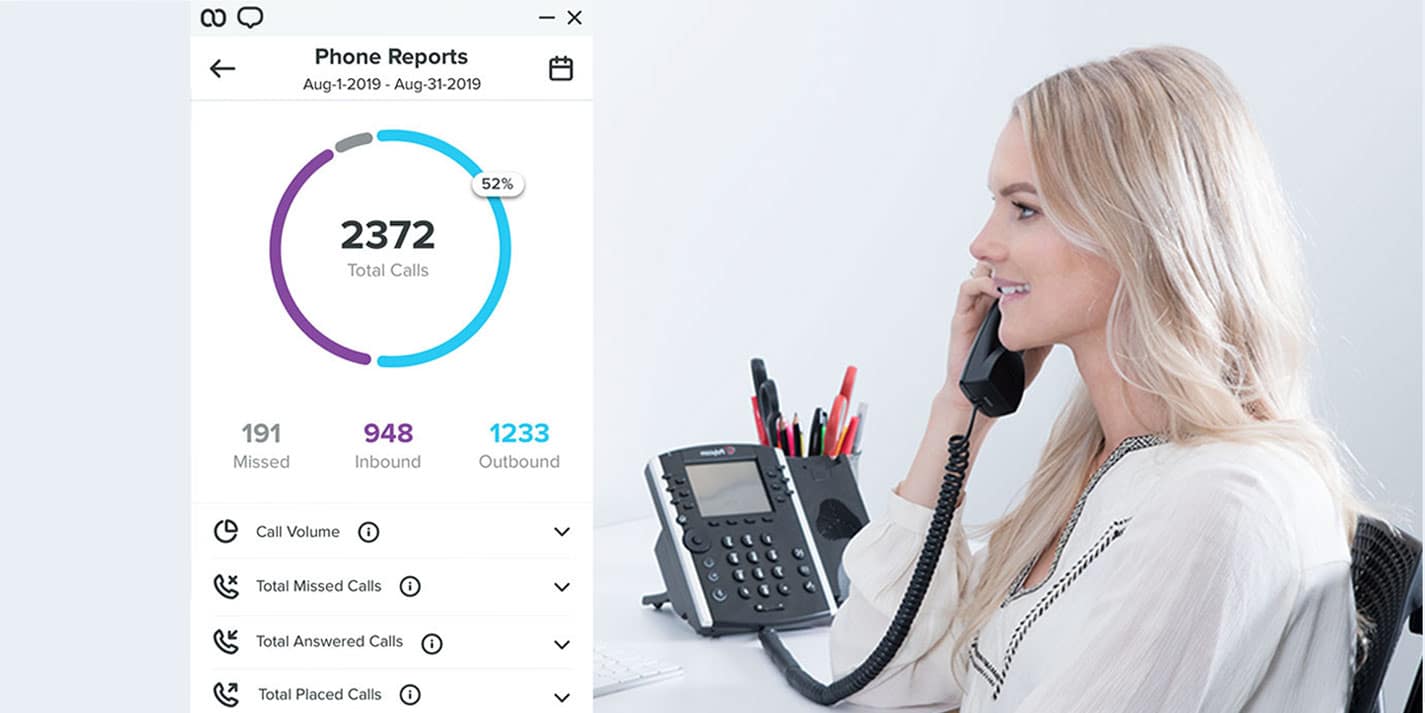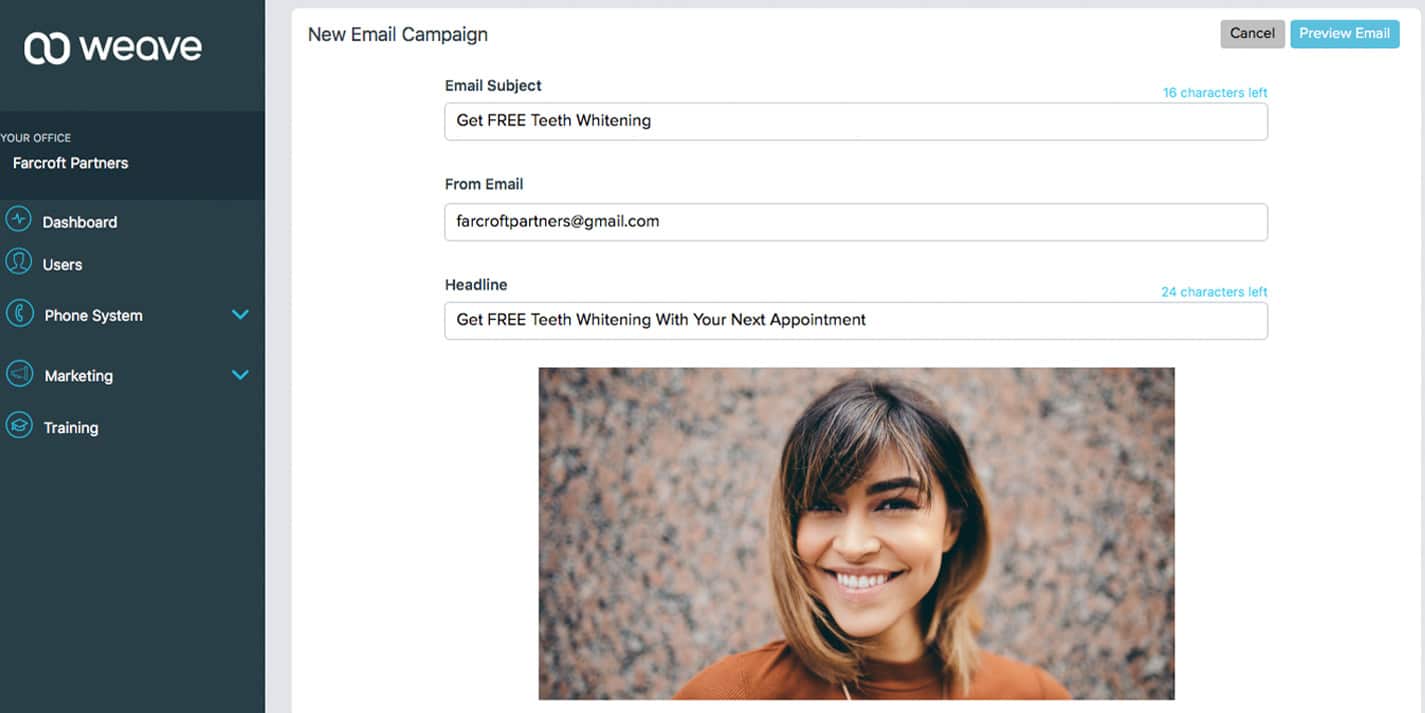
13 Ways to Minimize Human Contact While Maximizing the Patient Experience
Healthcare providers are faced with a difficult problem because of the Covid-19 pandemic. They need to continue to offer essential services to their patients while meeting the constantly fluctuating regulations and standards created by our society’s concern about the virus. One of the main ways to reduce the spread of disease is social distancing.
So, how can healthcare professionals minimize human contact in their offices? There are a number of approaches, most of which have to do with limiting the number of patients and employees in the office. However, an alternate method involves optimizing your practice’s communication network in order to protect customers and get them vital information as quickly as possible.
The actual care rendered by your practice isn’t the issue. This work is done in sterile environments where you and your team are already meticulous about keeping patients safe. Places like waiting rooms, the front desk, and whatever patients are bringing into your office are more threatening sources of community spread.
The goal of this article is to show how your practice can reduce the amount of human contact that goes on in your office and simultaneously can improve the patient experience. Much of this work is facilitated by a consolidated communication system.
Here are 13 unique ways to minimize human contact and maximize the patient experience using a unified communication network:
1.Establish virtual waiting rooms
Waiting rooms are a hotbed for germs. People are handling magazines, touching chairs and tables, and sharing pens all day long. It’s incredibly difficult for your front desk team to regulate how patients are behaving in the waiting room when they’re occupied with administrative duties.
Practices looking to eliminate the amount of time patients spend in the waiting room should implement virtual waiting rooms. With a two-way texting service on board, your receptionists can text patients before appointments and ask them to wait in the parking lot while they’re checking in. When you and your team are completely ready to receive a patient, you can text them and bring them directly back for an appointment, circumventing the waiting room altogether.

2.Send wellness forms
With Covid-19 looming over almost every public interaction, it’s imperative that your practice screen customers in advance of appointments. If patients have a suspicion that they’re coming down with the virus, you’ll want to redirect them toward a clinic or hospital, or simply have them remain in quarantine. This screening process is made easy by digital wellness forms.
Wellness forms aren’t a thorough investigation into patients’ lives. They’re electronic forms that can be sent by text with appointment reminders or confirmations, and can be filled out in a minute or two. By asking patients about their current health, their recent travel, and their contact with other potentially infected friends and family, you’re actively reducing the chances of your employees and other patients contracting Covid-19.
3.Have customer insights ready
Knowing the particular circumstances of each of your customers can be tough, especially if you have a growing practice. It’s impossible to remember the unique situation of each patient, so many healthcare providers try to link personal medical histories to their communication devices.
Customer insights are personal information that’s connected to your phone system and populates on your screen when a patient calls. It includes names, birthdays, medical conditions, family members, upcoming appointments, and outstanding balances. By having easy access to patient histories, your team can minimize the amount of time they spend chatting and discussing services with customers at your front desk.

4.Text reminders and confirmations
In an age of heightened concern regarding disease spread, practices should be aiming to keep the flow of patients through their doors as orderly as possible. There will always be late arrivals and no shows, but it’s crucial that you minimize these instances to prevent customers from scrambling into your waiting room without worrying about following protocol.
By sending appointment reminders and confirmations via text message, your practice can ensure that its patients know about their upcoming appointments and arrive on time. As previously mentioned, these texts are a perfect place to include virtual waiting room procedures and wellness forms. With communication software, appointment reminders and confirmation can also be automatically sent at pre-selected times to patients. "Amazing technology has simplified our patient communication immensely! We are fairly new and can't wait to learn even more Weave features... customer service and tech support is SPOT ON and can't be beat! " - The Eye Station
Weave Helps Streamline Business Communication
5.Use Quick Fill lists
When patients do cancel on short notice, it’s important that you try to fill the appointment slot, especially if your office hours have been limited. Quick Fill lists are composed with communication software that indicates those patients most likely to come in for a visit on short notice, then allows your administrative team to send a text blast to ten patients at a time.

This feature of an integrated communication system is geared toward maximizing the patient experience. Because of closures and reduced hours, many patients are eagerly awaiting the chance to visit your practice. Turn cancellations into opportunities for other customers by using Quick Fill lists.
6.Accept more payment types
Healthcare providers hoping to minimize human contact should consider adding more payment options for their patients. Diversifying the types of payments customers can make has been shown to increase satisfaction and attract new clientele.
A complete payment platform allows practices to accept conventional payments, like cash, check, and cards. These payment options, however, are potential ways to transmit germs and viruses. Practices moving toward digital payments made with mobile wallets or by text are offering patients and employees better ways to create social distancing.
7.Collect payments by text
Thanks to the development of communication technology, payments are now able to be collected by simply sending patients a text message after their appointments. This method gets around the typical stop at the front desk, which is often a breach of social distancing.
Payment requests are texts that come with a link to payment sites where patients can take care of their outstanding balances, whether from the parking lot or the comfort of their home. This communication practice minimizes the contact between receptionists and patients, keeping both parties safe.

8.Chat with your team
Because of the premium put on social distancing, some healthcare providers have asked part of their staffing to work remotely. This situation presents a number of difficulties, mostly centered around a lack of cohesion and obstructed communication.
By setting up a team chat within your network, your practice can keep everyone on the same page, even if they’re working remotely. The right system lets you download an app to your smartphone or laptop that enables you to have one-on-one or group conversations regardless of your location.
In the video below, practice owner Ross Nash of Cosmetic Dentistry of the Carolinas shares how he’s been using the Weave Mobile App to stay in touch with staff ( and patients) and while out of office.
Watch How Dr. Nash’s Office Benefits from Team Chat
9.Identify your busiest hours with analytics
Most offices have a good idea of when their phones and front desk are busiest, but their evidence is anecdotal and experiential rather than quantified. If you’d like to get actual statistics about your office’s call volume, missed calls, and even inactive patients to call, consider adding a communication system with software analytics.

Modern communication networks can make the numbers they gather digestible through a user-friendly interface. Getting concrete statistics about phone calls to your office lets you improve your staffing and optimize the patient experience in stressful times.
10.Request online reviews
It was formerly difficult to get patient feedback, reviews, and testimonials without actually sitting down and listening to them or having them write down their opinions. Thanks to text messaging and the internet, your office can gather and share reviews without violating social distancing policy.
Instead of asking patients to give feedback in the office after appointments, just send them a review request by text, which they can fill out at home. As the number of positive reviews grows on sites like Google and Facebook, your business is bolstering its online reputation and reaching prospective clientele. All this takes place without any direct human contact.
11.Promote your practice online
There is a direct correlation between the reviews your office gets on popular review sites and its online visibility. Those practices with a high number of reviews on key sites have their own websites placed at the top of Google search results.
Focusing on this review strategy brings more attention to your website and social media pages. Your office should be developing the cyberspaces in order to allow customers and prospective customers to have a positive experience with your practice virtually. By developing online resources, you prevent patients from having to show up at your office unannounced.
12.Professionalize your emailing
The vast majority of healthcare providers send emails to their customers. Unfortunately, without an email marketing tool, these emails can come across as amateur or unprofessional. It’s important to distribute professional-looking emails because emailing is a great way to minimize human contact while keeping your patients well-informed.

How do you professionalize emails? Email marketing software lets your practice use pre-written templates and an image library to quickly craft and save your own emails that look and sound professional. This software also enables you to install Call to Action buttons in each email, which increases engagement while minimizing human contact.
13.Consolidate your communication
This blog post is a laundry list of communication strategies meant to protect your patients from Covid-19. Bringing all of these options and methods on board at once seems like a stretch, but it’s possible with a unified communication network.
Weave offers healthcare providers a complete business toolbox that includes each of the features we’ve discussed. Over the course of the Covid-19 pandemic, we have witnessed how effective this integrated system works for healthcare professionals trying to minimize human contact while maximizing the quality of the patient experience.
We’d like to show you how to implement these solutions in your practice. Contact us today to find out more about Weave’s communication solutions.